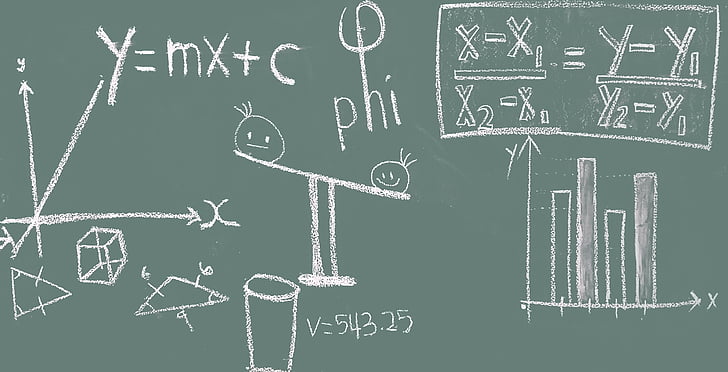动觉型学习者的5个特点
Learning has always been a part of human nature. As toddlers, we all learn to crawl, walk, and talk. We then attend schools and colleges to develop new skills. It will not be wrong to say that we all are avid learners.
学习一直是人类本性的一部分。蹒跚学步的时候,我们都学会了爬行、走路和说话。然后我们进入中小学和大学学习新技能。可以说,我们都是积极的学习者。
Learning, in itself, is a beneficial activity. The better a person is at learning new skills or concepts, the more successful they can be in a particular field. Many experts have tried to understand the mechanism behind how our brain learns new things. They have developed various models of learning styles, among which the VARK model is quite popular.
学习本身就是一种有益的活动。一个人学习新技能或新概念的能力越强,他在某个领域就越成功。许多专家试图了解大脑学习新事物的机制。他们开发了各种学习风格的模型,其中VARK模型很受欢迎。
VARK stands for visual, auditory, reading/writing, and kinesthetic. According to this theory, we learn things either by watching, listening, reading/writing or by doing.
VARK代表视觉、听觉、读写和动觉。根据这个理论,我们可以通过看、听、读、写或做来学习。
Here’re 5 characteristics of a knesthetic learner:
以下是5个“动觉型学习者”的特征:
1. They Never Get Bored of Learning
他们从不厌倦学习

The process of learning is always enjoyable for kinesthetic learners because they are personally involved in it. Sitting in a classroom, hearing the professor’s lectures, or watching a documentary is what we call “passive learning.” We call it so because it doesn’t require active participation from the learner. They only need to focus on their sense of vision or hearing.
对于动觉型学习者来说,学习的过程总是令人愉快的,因为他们亲自参与其中。坐在教室里,听教授讲课,或者看纪录片,我们称之为“被动学习”。“我们这样称呼它是因为它不需要学习者的积极参与。他们只需要专注于他们的视觉或听觉。
But kinesthetic learners are active learners. They turn the learning process into an activity, like a fun game or hands-on experience. That is why they never get bored with their style of learning. In fact, every learning process is an opportunity for them to try new activities.
但是动觉型学习者是主动学习者。他们把学习过程变成一种活动,就像一个有趣的游戏或实践经验。这就是为什么他们从不厌倦他们的学习方式。事实上,每个学习过程都是他们尝试新活动的机会。
2. They Learn Skills Better Than Concepts
他们学习技能比概念更好
Facts and concepts can be learned by reading and listening. But skills cannot be acquired without practice. That is why kinesthetic learners are more suited for skill-based activities rather than concept-based subjects.
事实和概念可以通过阅读和听力来学习。但是没有实践就不能获得技能。这就是为什么动觉型学习者更适合基于技能的活动,而不是基于概念的主题。
It does not imply that such people are always bad at conceptual subjects like science or math. It just means that learning skills will be easier for them than grasping a concept. The process of practicing and improving skills resonates better with their style of learning.
这并不意味着这些人总是不擅长像科学或数学这样的概念学科。这只是意味着学习技能对他们来说比掌握一个概念更容易。练习和提高技能的过程更符合他们的学习风格。
However, they can still learn conceptual topics as well, as long as they find a way to create some sort of activity regarding the concepts.
然而,他们仍然可以学习概念主题,只要他们找到一种方法来创建一些关于概念的活动。
3. They Are Unlikely to Forget What They Have Learned
他们不太可能忘记他们所学到的东西

Kinesthetic learners usually don’t forget what they have learned. Our brain can store information as well as memories. Memories are easier to remember and recall as compared to information. We can clearly remember memories from years ago, but we easily forget what we had heard in the news a month ago.
动觉型学习者通常不会忘记他们学过的东西。我们的大脑可以存储信息和记忆。与信息相比,记忆更容易记忆和回忆。我们可以清楚地记得多年前的记忆,但我们很容易忘记一个月前听到的新闻。
So it means that actions (things we do/did) are easier to remember than sensory information (things we see/hear/read). Since kinesthetic learners learn through actions, they won’t forget what they have learned any time soon.
所以这意味着动作(我们做的/做过的事情)比感官信息(我们看到/听到/读到的东西)更容易记住。由于动觉型学习者通过行动来学习,他们不会很快忘记他们所学到的东西。
4. They Are Better at Innovating Than Implementing
他们更善于创新而非执行
People can be divided into two categories – those who innovate and those who implement. The innovators are people who give birth to new concepts, discoveries, and inventions. The implementers are those who make use of the existing concepts, ideas, theories, and information.
人可以分为两类——创新的人和实施的人。创新者是产生新概念、新发现和新发明的人。实现者是那些利用现有概念、思想、理论和信息的人。
Kinesthetic learners are curious by nature. And because of their preference for learning through action, they love to experiment. As such, they show more interest in gaining new information and experience. They may enjoy working in areas of research or engineering.
动觉型学习者天生好奇。因为他们喜欢通过行动来学习,所以他们喜欢实验。因此,他们对获取新的信息和经验更感兴趣。他们可能喜欢在研究或工程领域工作。
5. They make learning fun for those around them.
他们让周围的人感到学习的乐趣。

Kinesthetic learners really enjoy learning in groups. In fact, it boosts their learning process when there are more people involved. There are more opportunities for engaging in interesting learning activities when more than one person is involved.
动觉型学习者非常喜欢小组学习。事实上,当更多的人参与进来时,他们的学习过程会得到提高。当有不止一个人参与时,就有更多的机会参与有趣的学习活动。
The main focus of kinesthetic learners is to be physically and mentally invested in the learning process. And when they are in a group, they will want to include everyone in the process. So, people enjoy learning with kinesthetic learners even if they themselves aren’t one.
动觉型学习者的主要关注点是在学习过程中身体上和精神上的投入。当他们在一个小组里时,他们会想让所有人都参与进来。所以,人们喜欢和动觉型学习者一起学习,即使他们自己不是动觉型学习者。







